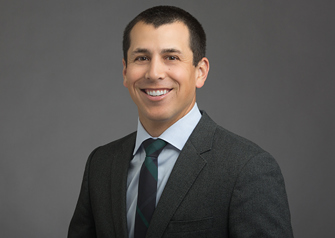
News
Was Spine Surgery Tiger’s Secret Weapon?
Date posted: 4/30/2019
Last updated: 4/30/2019
Table of Contents
When Tiger Woods thrust his arms into the air at Augusta National in April, he not only celebrated his fifth Masters championship, but he also conquered a 43-year-old body that many feared had gotten the best of him.
The win was Woods’ first triumph at a major since the 2008 U.S. Open—a stretch in which the former World No. 1 battled a collection of injuries that begged the question whether Woods would ever be the same.
But Woods’ fourth back surgery—an anterior lumbar interbody fusion (or ALIF) procedure that he underwent in 2017—may have been among the biggest reasons why Tiger was able to roar back to capture his 15th major championship.
At the time of the surgery, Woods hadn’t competed in a major tournament in more than 18 months. He found the most basic of movements difficult due to back spasms and shooting pain in his legs that he dealt with daily.
“I had serious doubts after what transpired a couple years ago,” Woods said. “I could barely walk. I couldn’t sit. I really couldn’t do much of anything. Luckily, I had the procedure on my back, which gave me a chance at having a normal life. But then, all of a sudden, I realized I could actually swing a golf club again.”
Dr. Gregory Lopez, a spine surgeon at Midwest Orthopaedics at Rush, says that although the ALIF procedure is not new, however a change in the instrumentation now allows surgeons to perform the surgery from the only the front. By doing so, it keeps lower back muscles from being affected in surgery, which allows for a high rate of fusion and potentially a faster return to high-level activities.
Prior to undergoing the ALIF procedure, Woods was experiencing issues with the L5-S1 disc, which Dr. Lopez said is common in athletes, specifically golfers. The disc space can be problematic for athletes who perform a repetitive torsional motion (twisting with torque). Because golfers use such torque in their swing, the constant tension can cause issues, especially around the L5-S1 disc.
“This particular area of the spine works as an anchor for the lumbar (lower back) region to the pelvis, and is prone to injury with rotational forces,” Dr. Lopez said.
Patients who suffer from chronic lower back pain that extends into the buttocks and legs are advised to seek out some form of lower back treatment, Dr. Lopez said. Unless the condition worsens, most patients will see improvement with physical therapy and anti-inflammatory treatments. However, if pain persists and advanced imaging confirms that a disc injury has occurred, the ALIF procedure could be a good solution, Dr. Lopez said.
As beneficial as the surgery has proven to Woods, the recovery time needed to return to golfing activities varies. Although Woods missed 10 months post-surgery, Dr. Lopez said he was likely swinging a golf club within six months. Dr. Lopez suggests that high-level athletes begin with high-impact exercise approximately four months after surgery while other patients will be able to resume workout activities in five or six months.
“The hardest part of returning to sports after a disc injury is performing swinging and throwing movements,” Dr. Lopez said. “But the anterior lumbar antibody fusion procedure can provide stability for the spine, causing less soft tissue injury than conventional surgery, and a potential quicker return to sport.”

